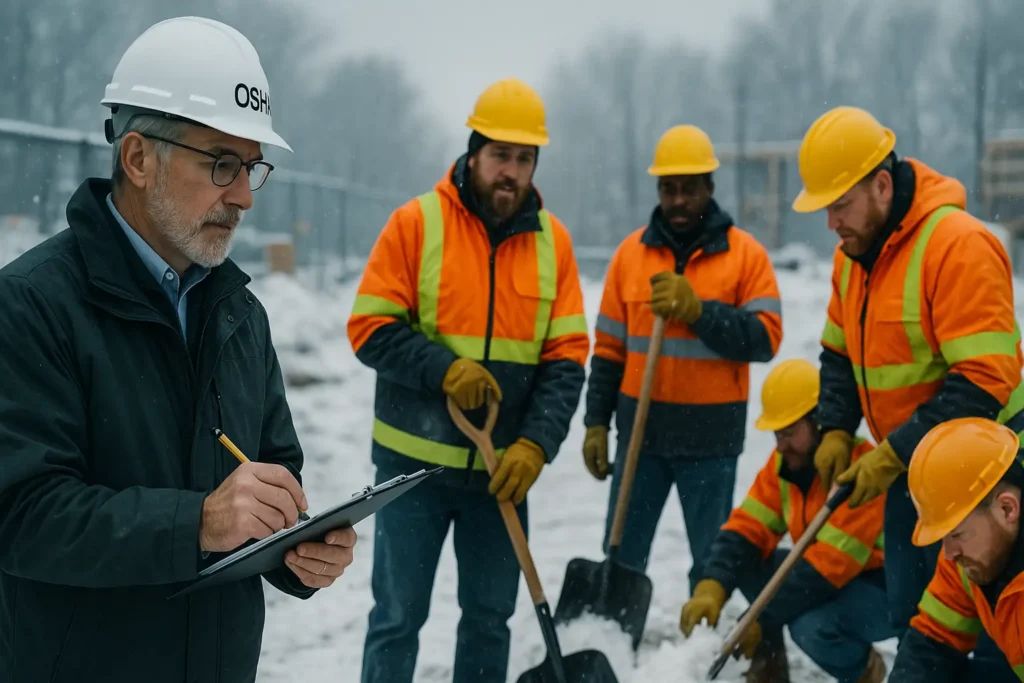Addressing Top Training Pitfalls To Rectify By OSHA Managers
Considering the occupational safety and health administration training program is not just about fulfilling the regulations but also prioritizes the importance of safeguarding yourself and others. By promoting a culture of safety, you can undergo the process of unbeatable success. However, Occupational safety and health training programs are the first and most paramount to take by employees and employers in general or construction industries.
To perform effective training and safety programs, safety managers are hired whose role is not to oversight the process of training. Let’s delve into understanding the top OSHA training mistakes that need to be fixed by safety managers who are striving to fortify a secure and safe working environment.
Uncovering the valuable insights gathered by the professionals and experienced safety managers on the mistakes in OSHA training process for fruitful outcomes. Before going further, let’s understand why is it important to promote proficient safety management.
The Significance Of Hiring Safety Managers In Fostering A Safe Culture:
There are many reasons to discover why is it important to hire a safety manager, firstly this safety management ensures that the regulatory standards of OSHA are being followed or not. The safety managers aim to provide a healthy working environment to the employees. Moreover, every team needs a leader and managers, to help them work with dedication and proficiency.
This safety management is necessary to foster the positive role of prioritizing safety and improving morale. Moreover, as OSHA penalties are becoming a serious issue that is destroying the company’s reputation, the need for safety managers has grown since the penalties for repeated violations have been increasing to $156,259.
Safety managers keep a keen eye on the performance of employees, their need has grown as the significant concern of reported fatal falls has increased to 370 in 2021. These incidents and hazardous risks are making safety management imperative, the safety managers play an influential role in mitigating these risks and providing a safe working environment for each individual.
What are the top 6 mistakes to tackle by safety managers?
As navigating toward creating a safe and secure working place, safety management can become challenging as this training process has many complexities. Following are the mistakes to avoid by safety managers to obtain secure outcomes of Health and safety training.
Mistake #1: Using generalized methods:
The main and mostly observed mistake in the duration of OSHA training is the one-size-fits-all approach. This approach includes the same method for all situations and individuals, this will lead the managers to fail in overseeing the most distinctive hazards and risks that are inherent to each workplace situation differently.
Thus, by relying on already developed old and generic methods of training, organizations may experience issues addressing and dealing with different and unique challenges. Safety managers are supposed to avoid this mistake by providing training programs according to the needs of employees and focusing the relevant training on the areas that are supposed to be fixed.
This one-size-fits-all approach often increases the;
- Frustration among participants
- Disengagement during the process of training.
This approach leads to overlooking the nature of diversity in situations according to the areas, work, and employees.
Mistake #2: neglecting the signs of employee disengagement:
Engaging the participants in a training process or any project is the foremost duty of safety managers, overlooking the failure of engagement may lead to impotent outcomes of training and efforts. The continuous engagement of the employees is necessary to bring forth the valuable results of training, to captivate them in your discussion, safety managers should avoid using monotone, and uninspiring ways of speech.
Additionally, effective communication is a necessary element to focus on in safety management this includes various discussions like
- Effective manner of communicating the Hazard Communication Standard (HCS), and provision of unified approaches.
- Discuss about posters or other generals.
- Communicating the areas of problems.
This mistake is commonly made by safety managers, who overtook the importance of group discussions, examples of real-life events, and hands-on demonstrations. Moreover, the lack of reinforcement is another reason for employee disengagement. Reinforcement is necessary throughout the training process for the employees by the managers.
Mistake#3: insufficient training provision:
This is another error commonly found during the Provision of OSHA training, insufficient training is the concept in which it is assumed that safety training can easily be done just in one time. However, with time as new issues arise, employees who are not used to revising and practicing the training may forget the ways to deal with those hazardous situations.
Therefore, the importance of consistent reinforcement is essential to maintain and engrave the valuable safety training information inside the minds of employees. The safety managers who are not focused on doing regular checkups and noting the training updates aren’t committed to providing a protected working environment to others.
Moreover, it should be noted clearly if the employees gained valuable insight from the training to find the areas where efforts are required.
Mistake #4: neglecting the multiculturalism in industries:
Safety managers often seem to be trained just according to provide the training to a specific culture in a specific language. This ignorance of the language barrier and diversity in training methods is a core mistake. In multicultural workplaces, people from every culture can be employed who speak different languages and have different sets of skills.
Not ensuring that those employees who don’t speak English are getting the training and instruction in a language they understand is an error to be tackled. Moreover, these employees should be provided with more learning session which involves the learning of new languages and interactive sessions.
Mistake #5: not evaluating the throughout the process:
This is another health and safety training mistake by safety managers that can hinder the safety training process. Evaluation and feedback are the basic requirements from the safety managers as they give valuable insights to make the training process more effective and purposeful.
Moreover, this feedback is also required to provide a trustworthy environment, without these evaluations employees will not be able to recognize the areas where fixations are necessary, or provide clear guidance and employees will end up being disoriented or confused. These periodic evaluations are the basic need of the employee through the training session to uplift their level by working with more dedication and commitment.
Mistake #6: ignoring comprehensive safety understanding:
The safety managers can overlook the need to balance personal safety and process safety while taking the OSHA training courses. Personal safety doesn’t encompass overall work-related safety. Thus, safety management requires providing the employee with personal safety but also providing a secure and reliable workplace safety environment.
Moreover, there’s a basic misconception that has been found among many safety managers about.
Navigating the basic expectations from safety managers:
Let’s understand the role of safety managers and the expectations that occupational safety and health administration require from safety managers.
Must be educated and certified:
To get the role of safety manager a strong educational background is needed they’re the cornerstone of OSHA management systems. Moreover, they must have enrolled in several certificate programs such as certified safety profession (CSP) or others to bolster their qualifications
Must have knowledge and experience:
These safety managers need to be previously experienced in related safety management fields and have the amount of necessary knowledge about the construction industry (29 CFR 1926) and general industry standards (29 CFR 1910 ) of OSHA.
Must have effective communication skills:
As they are the leading group of the safety training team, thus having an effective and inspiring manner of communicating and delivering the message is essential. This also includes a welcoming manner for employees to communicate their concerns and issues.
Must possess risk-indicating and recordkeeping attitude:
The safety manager’s core duty is to keep an up-to-date record of employee’s performance towards fostering a safety culture. Additionally, they should be professional enough to identify the risks and choose an effective strategy for preventing hazardous situations from happening.
construction sites, importantly violations are associated with human error but safety managers should not overlook if they are human error or the willful act of an employee.
Safety Managers: The Backbone of Creating the Secure Path
Notably, safety managers hold an authority to play a critical part as they are responsible for the adherence to Occupational safety and health administration standards. By overcoming the above-mentioned errors safety managers can boost the journey of safe and protected workplace success. Ultimately by prioritizing their roles and responsibilities, they can fulfill their duty within the framework of standards established by OSHA.
Related Posts

Training on a Budget? Find OSHA Training at a Low Price

OSHA Winter Safety Tips for 2025: Protect Outdoor Workers


